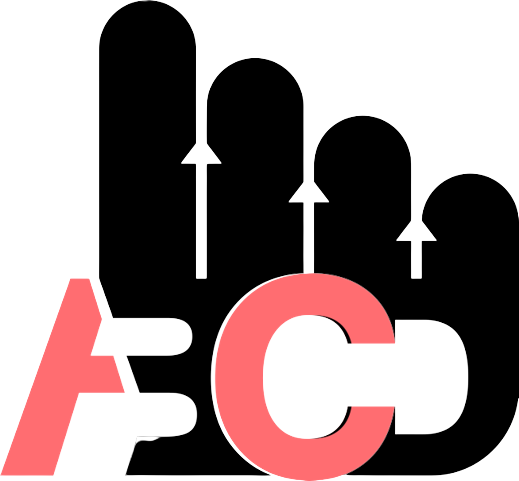Alcoholic beverage users: structural and functional aspects based on the Calgary Model
DOI:
https://doi.org/10.15253/2175-6783.20192040226Keywords:
Alcoholic Intoxication; Family Relations; Family Characteristics; Models, Nursing; Family Nursing.Abstract
Objective: to describe the structural and functional aspects and support networks of families living with users of alcoholic beverages. Methods: a cross-sectional descriptive study, methodological reference of the Calgary Family Assessment Model, based on semi-structured interviews with the genogram and eco-map tools, carried out with relatives of four construction workers hospitalized for injuries related to alcoholic beverage use, and notified to an information and toxicological assistance center. Results: there was a reduction of the children between the generations, but the use of drugs was expanding in the families. Distant and conflicted family relationships were found. The neighborhood support network was strongly linked, but the support of Primary Health Care was a weak link. Conclusion: the structural and functional evaluation of the families propitiated knowledge for health promotion, treatment and recovery processes to restore fragile family relationships.
References
Porto PN, Borges SAC, Araújo AJS, Oliveira JF, Almeida MS, Pereira MN. Factors associated with the use of alcohol and drugs by pregnant women. Rev Rene. 2018; 19:e3116. doi: http://dx.doi.org/10.15253/2175-6783.2018193116
Lipari RN, Ahrnsbrak RD, Pemberton MR, Porter JD. Risk and protective factors and estimates of substance use initiation: results from the 2016 National Survey on Drug Use and Health. NSDUH data review [Internet]. 2017 [cited Jan 12, 2019]. Available from: http://www.ncbi.nlm.nih.gov/books/NBK481723/pdf/Bookshelf_NBK481723.pdf
Vargas D, Bittencourt MN, Barroso LP. Patterns of alcohol consumption among users of primary health care services in a Brazilian city. Cien Saúde Coletiva. 2014; 19(1):17-25. doi: http://dx.doi.org/10.1590/1413-81232014191.1972
Mendes TPL, Tacla MTGM, Ferrari RAP, Fontana LMS. Understanding the breastfeeding in the family context: the use of genogram and ecomap. Rev Pesq Qual [Internet]. 2017 [cited Jan 12, 2019]; 5(7):38-52. Available from: https://editora.sepq.org.br/index.php/rpq/article/view/51/62
Ferraboli CR, Guimarães AN, Kolhs M, Galli KSB, Guimarães AN, Schneider JF. Alcoholism and family dynamics: feelings shown. Ciênc Cuid Saúde. 2015; 14(4):1555-63. doi: http://dx.doi.org/10.4025/cienccuidsaude.v14i4.27245
Dutton CE, Adams T, Bujarski S, Badour CL, Feldner MT. Posttraumatic stress disorder and alcohol dependence: Individual and combined associations with social network problems. J Anxiety Disord. 2014; 28(1):67-74. doi: http://dx.doi.org/10.1016/j.janxdis.2013.11.010
Reis LM, Sales CA, Oliveira MLF. Narrative of a drug user’s daughter: impact on family daily routine. Esc Anna Nery. 2017; 21(3):e20170080. doi: http://dx.doi.org/10.1590/2177-9465-ean-2017-0080
Munhoz TN, Santos IS, Nunes BP, Mola CL, Silva ICM, Matijasevich A. Trends in alcohol abuse in Brazilian state capitals from 2006 to 2013: an analysis of data from the VIGITEL survey. Cad Saúde Pública. 2017; 33(7):e00104516. doi: http://dx.doi.org/10.1590/0102-311x00104516
Monteiro GRSS, Moraes JCO, Costa SFG, Gomes BMR, França ISX, Oliveira RC. Application of the Calgary family assessment model in hospitals and in primary health care: an integrative review. Aquichan. 2016; 16(4). doi: http://dx.doi.org/10.5294/aqui.2016.16.4.7
Souza IP, Bellato R, Araújo LFS, Almeida KBB. Genogram and eco-map as tools for understanding family Care in chronic illness of the young. Texto Contexto Enferm. 2016; 25(4):e1530015. doi: http://dx.doi.org/10.1590/0104-07072016001530015
Martins BF, Oliveira MLF. Vulnerabilidad social y clasificación de riesgo de familias de trabajadores de la construcción civil que son usuarios de alcohol. Enfermeria Comunitária [Internet]. 2016 [cited Jan 12, 2019]; 12(2). Available from: http://www.index-f.com/comunitaria/v12n2/ec9815.php
Nimtz MA, Tavares AMF, Maftum MA, Ferreira ACZ, Borba LO, Capistrano FC. The impact of drug use on the family relationships of drug addicts. Cogitare Enferm. 2014; 19(4):667-72. doi: http://dx.doi.org/10.5380/ce.v19i4.35721
Leonidas C, Santos MA. Family relations in eating disorders: the Genogram as instrument of assessment. Ciênc Saúde Coletiva. 2015; 20(5):1435-47. doi: http://dx.doi.org/10.1590/1413-81232015205.07802014
Seleghim MR, Galera SAF, Oliveira MLF. Pesquisa com usuários de crack e seus familiares: análise de uma vivência. Saúde Transform Soc [Internet]. 2014 [cited Jan 15, 2019]; 5(1):36-41. Available from: http://incubadora.periodicos.ufsc.br/index.php/saudeetransformacao/article/view/2134/3646
Ladis BA, Macgowan M, Thomlison B, Fava NM, Huang H, Trucco EM, et al. Parent focused preventive interventions for youth substance use and problem behaviors: a systematic review. Res Soc Work Pract. 2018; 30:1-23. doi: https://doi.org/10.1177/1049731517753686
Sharma VK, Hill SY. Differentiating the effects of familial risk for alcohol dependence and prenatal exposure to alcohol on offspring brain morphology. Alcohol Clin Exp Res. 2017; 41(2):312-22. doi: https://doi.org/10.1111/acer.13289
Lopes HP, Gonçalves AM. A política nacional de redução de danos: do paradigma da abstinência às ações de liberdade. Pesqu Prát Psicossoc [Internet]. 2018 [citado 2019 Jan 15]; 13(1):e1355. Disponível em: http://www.seer.ufsj.edu.br/index.php/revista_ppp/article/view/2858/1886
Downloads
Published
How to Cite
Issue
Section
License
Copyright (c) 2019 Rev Rene

This work is licensed under a Creative Commons Attribution 4.0 International License.










